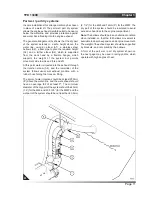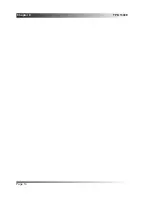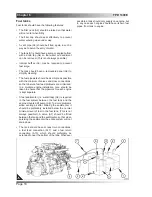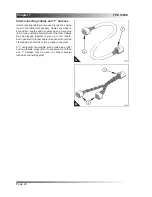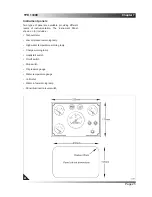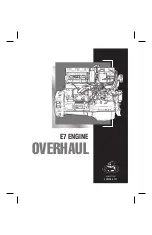
TPD 1399E
Chapter 4
Page 13
Engine Room Ventilation
The engine room must be ventilated for two reasons:
•
To supply the engine with air for combustion.
• To provide a flow of air through the engine room to
prevent an excessive temperature build up, which
may cause components such as the alternator to
overheat.
In most applications in temperate climates, the engine
will draw air from the engine room. If this is the case
then, as a rough guide, it can be taken that every
horsepower produced by the engine requires, as a
minimum, 1.6 sq. cm. (0.25 sq. ins) of vent area. If
the boat is likely to be used in hot climates, and if
engine room ventilation fans are fitted, then a vent
area of 3.2 sq. cm. (0.5 sq. ins) per horsepower
should be provided (see the table below). Wherever
possible a flow of air through the engine room should
be encouraged by using forward facing intake vents
to take advantage of ram airflow.
With an effective ventilation system the engine air
intake temperature will be no more than 10 Celsius
degrees higher than the outside air temperature.
1. Minimum cross section of air duct per engine
Model
For hot
climates
For temperate
climates
M65
210 sq.cm. (32
sq.ins.)
110 sq.cm. (16
sq.ins.)
M85T
260 sq.cm.
(40.3 sq.ins.)
130 sq.cm.
(20.1 sq.ins.)
The air entry vents should be situated where spray is
not likely to enter them and some form of water trap
is desirable (A).
When the engines are shut down after a run at high
output in high ambient temperature conditions, it will
be found that very high air temperatures will build up in
the engine compartment. In boats with open cockpits
this is usually of no real consequence but if the engines
are mounted below a wheel house, then unpleasantly
warm conditions may result. In these circumstances
engine room ventilation fans are beneficial, preferably
arranged to exhaust air from over the engine.
Summary of Contents for M65
Page 1: ... Installation Manual GB Part No TPD 1399E M65 M85T ...
Page 2: ......
Page 4: ...TPD1399E ...
Page 20: ...Chapter 4 TPD 1399E Page 14 ...
Page 26: ...Chapter 6 TPD 1399E Page 20 ...
Page 28: ...Chapter 7 TPD 1399E Page 22 ...
Page 33: ...TPD 1399E Chapter 7 Page 27 ...
Page 34: ...Chapter 7 TPD 1399E Page 28 ...
Page 38: ...Chapter 7 TPD 1399E Page 32 ...
Page 40: ...Chapter 8 TPD 1399E Page 34 ...
Page 44: ...Chapter 9 TPD 1399E Page 38 ...
Page 46: ...Chapter 10 TPD 1399E Page 38 ...
Page 52: ...Chapter 11 TPD 1399E Page 44 ...













